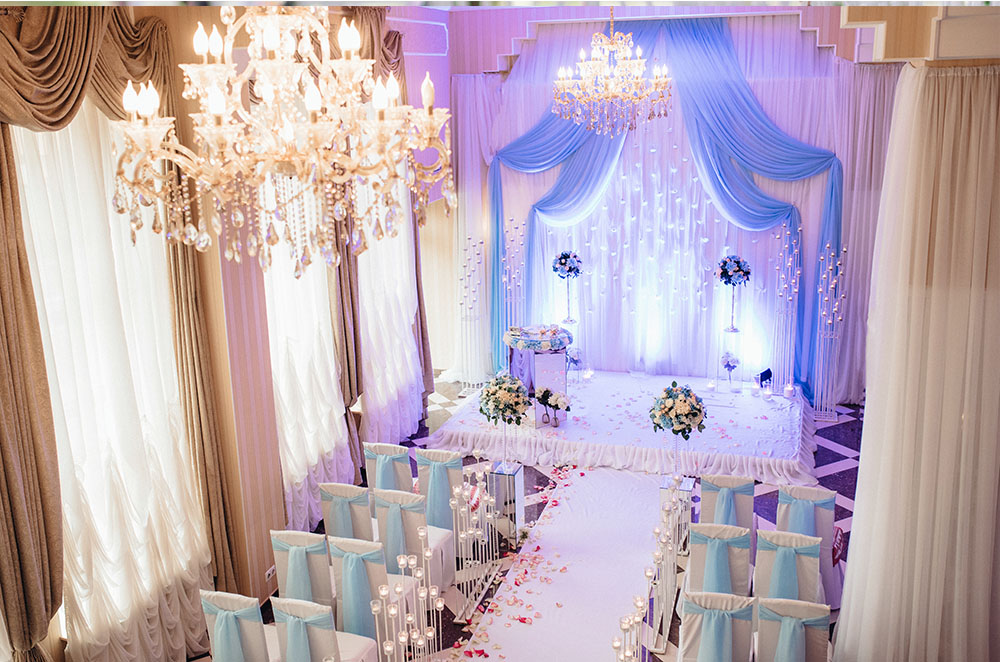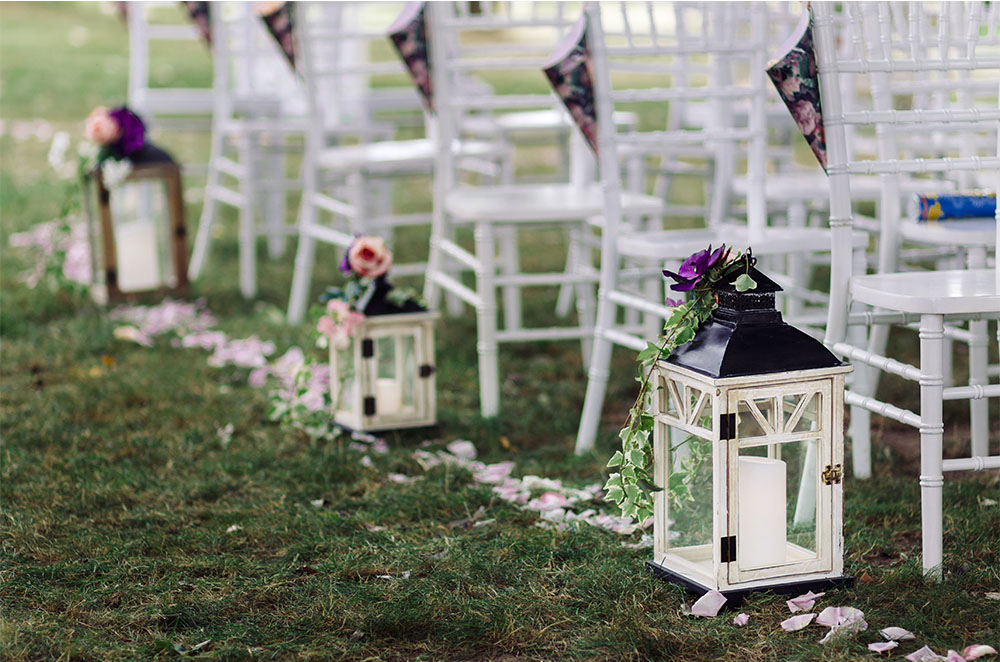Aisle Runners: Decorating the Ceremony Walkway
This page includes affiliate links. As an Amazon Associate I earn from qualifying purchases. Read more on our Affiliate Disclosure.

You’ve picked your date, booked your venue, and chosen your dress, and the little details of your big day are finally beginning to fall in place. You close your eyes and you can see the beautiful layout of the ceremony, just the way you always dreamed: the picturesque arch up front, the stunning bouquets at the entrance, the flickering lanterns lighting your way to the most wonderful moment of your life.
But wait! Does your vision include an aisle runner?
You stop to consider for a moment. Do I need an aisle runner? Is this a necessary part of the ceremony, or just an outdated tradition? Can I save a little money in the budget by skipping it, or would I regret it later when scrolling through my pictures?
The tradition of the wedding aisle runner, like many other wedding traditions, is a little hard to trace and fully explain. Most likely, the aisle runner dates back to the days when streets were made of dirt rather than asphalt – and consequently, guests tracked dirty footprints into the church with them upon their arrival. The aisle runner created an exclusive, clean walkway for the bridal party after all the guests were seated.
But how does that tradition translate to the modern wedding ceremony?
Paved roads, among other developments in technology, might make the aisle runner seem a little unnecessary. And the thought of coordinating a perfect rollout might seem a little daunting. But in most settings, the aisle runner is going to provide the ceremony with a defined walkway that adds elegance to the bride’s arrival.
So what kind of a runner should today’s bride consider?


The answer depends mostly on the type of ceremony you have in mind!
Outdoor Ceremonies
For outdoor ceremonies, it’s essential that the runner is durable and meant for outdoor use. Nothing is more cringe-inducing than the thought of a bride’s chic high heels slicing right through a dainty paper runner, chopping holes as she walks up the aisle. If your wedding style is rustic, simple, or natural, you may consider a burlap runner, keeping in mind that this type of runner works best for an aisle with a solid walkway (like wood on a boardwalk, gravel, or a sidewalk). You may also consider a runner made of a rayon material, which is more durable than paper.
Ready to get your Wedding Registry started?
There’s no better place to start your wedding registry than Amazon.com. With over 200 million active users and over 350 million products, Amazon has your perfect gift in stock.
Indoor Ceremonies
For indoor ceremonies, or ceremonies on a patio, deck, or other hard surface, the possibilities are even more expansive. If budget is key, you might opt for an inexpensive runner like this paper option, which is meant for single use. Other paper runners have a delicate floral pattern that can provide beauty to your ceremony. For brides looking to make an over-the-top statement, a sequin runner provides a glamor like no other.
Sentimental Options
If you’re the sentimental type, you may even want to consider a customized runner. This runner is decorated with scripture from 1 Corinthians, a perfect welcome to a celebration of love. For a secular option, you might consider a poetic runner. Or for those brides who want to induce a few tears from their father as they make their entrance, this heartfelt runner might just do the trick. Endless options are out there for those brides looking for a literary reminder of the day’s importance.
But whatever runner you choose, there are a few key points to keep in mind.

First, the runner is traditionally rolled out by your ushers (or two of your groomsmen, if you’re not using ushers as seaters) from the front of the ceremony to the back. This is usually done after all the guests have arrived – right before the wedding party processional begins. However, some brides may opt to save the roll out until right before their entrance, if they’d like to make a grand entry. Alternatively, if you’d like to secure the runner in place before the guests even arrive (and not have to worry about it later), you may wish to block off your center aisle, so that guests can only be seated from the sides.
Be Prepared
The in-ceremony rollout happens quickly with no do-overs, which is why it’s important to choose a runner that comes pre-rolled, with a pull string attached. That way, 1 or 2 ushers can efficiently unroll the runner with no issues. If your runner doesn’t come with an adhesive, you’ll want to purchase some double-sided tape to secure the runner minimally at the beginning and end, or for an outdoor ceremony, some garden stakes to hold the runner down along the edges (essential on a windy day!).
You’ll want to measure the length of your aisle, to make sure you’re purchasing a runner long enough to cover the entire walkway. If you purchase a runner that is longer than you need it to be, you can always pre-cut it to your desired length, or arm your ushers with a retractable utility knife so that the perfect cut can be made easily and quickly in the moment.
Decorate!
A runner adds beauty to the ceremony, but it can always be dressed up, too. Silk flower petals scattered along the sides of your runner elevate the elegance of the walkway. Antique-style solar lanterns add a timeless and magical allure. Box planters, stuffed with real or fake flowers, can distinguish the aisle in a firm but gorgeous way.
However you choose to adorn the walkway on your special day, remember the significance of that short journey. Visualize the magic you want to feel as you walk toward the love of your life, and choose the decor that will generate that wondrous feeling.

